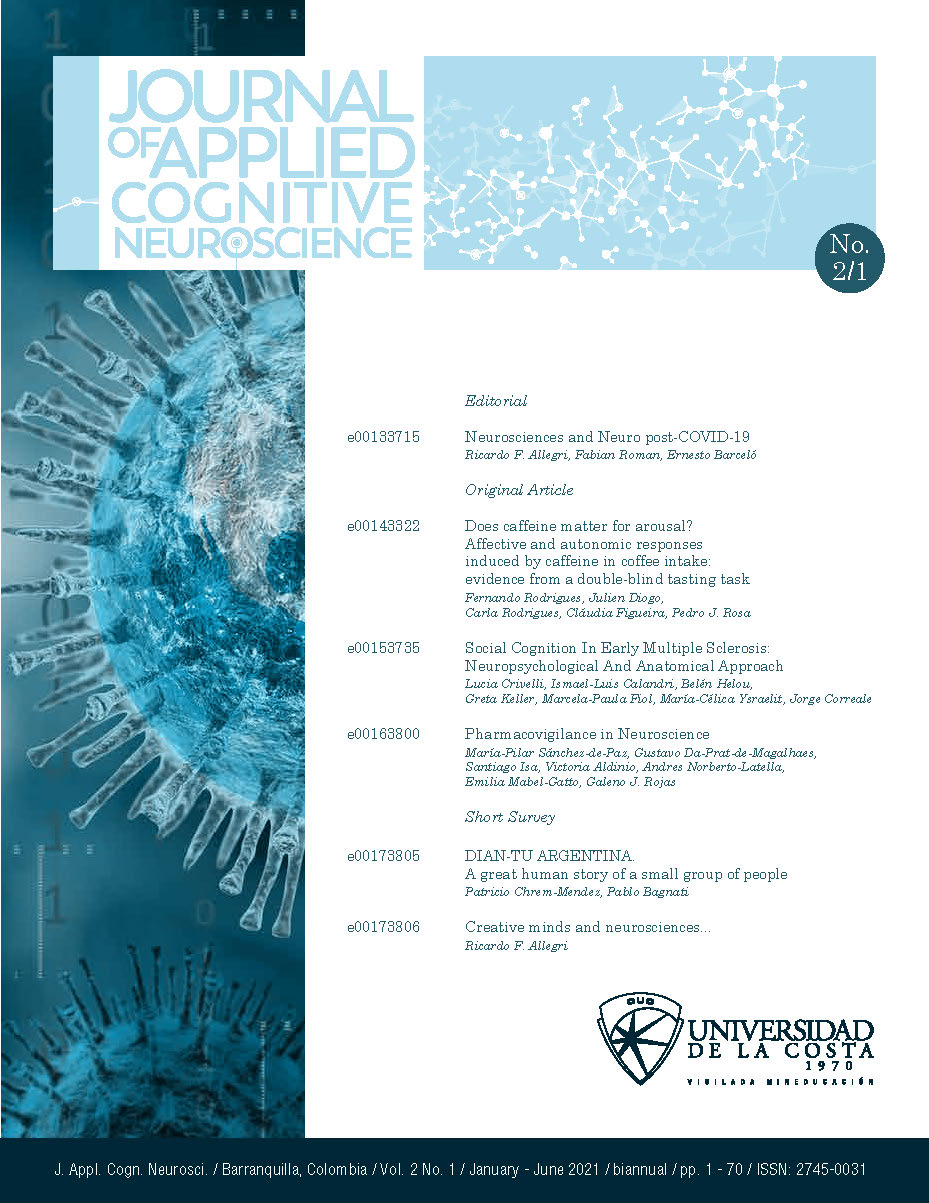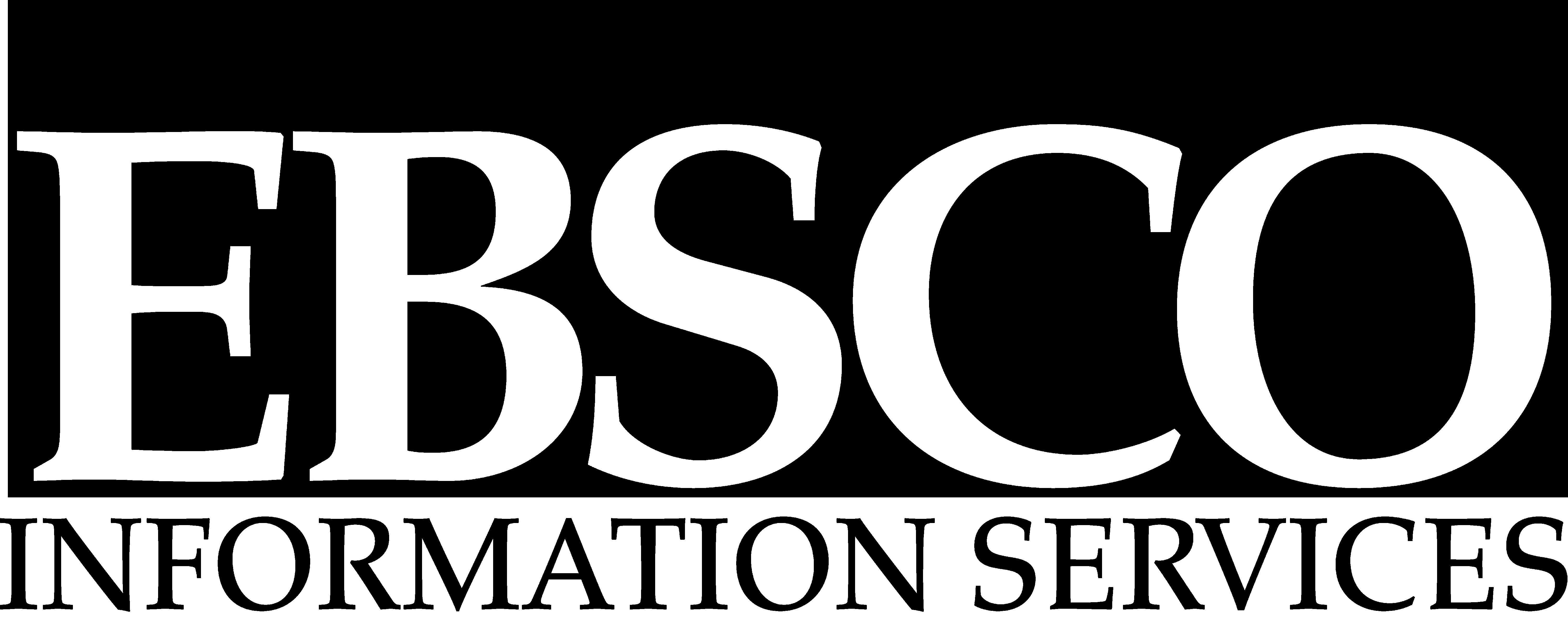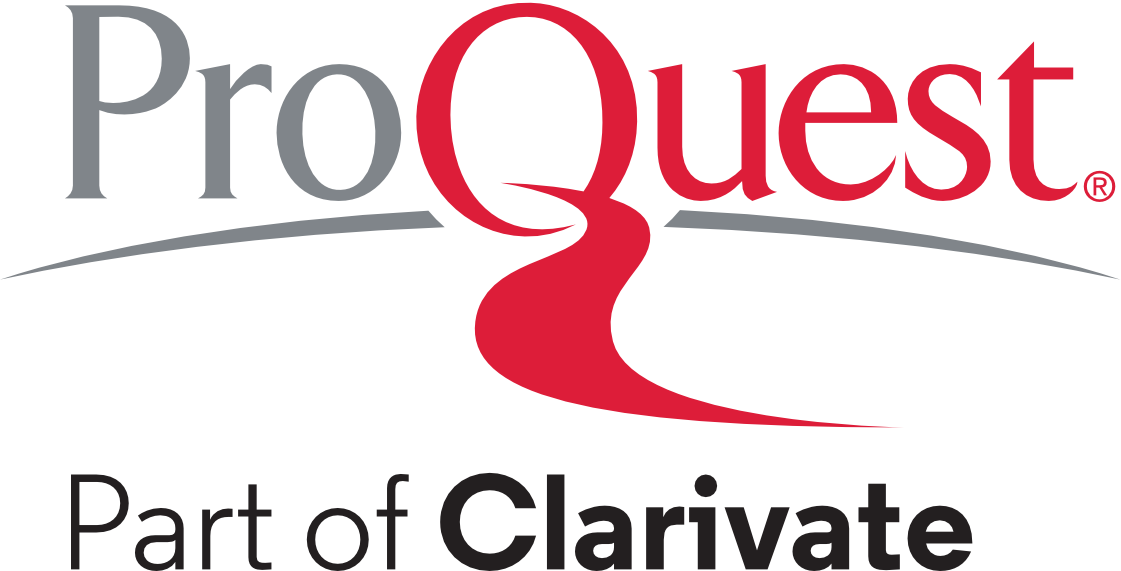Creative minds and neurosciences…
Mentes creativas y neurociencias...
DOI:
https://doi.org/10.17981/JACN.2.1.2021.06Keywords:
Creativity, intelligence, divergent thinking, psychiatry, neurology, anatomyAbstract
Creativity is the ability to generate original ideas in the arts or sciences, leaving traditional stereotypes behind, ultimately introducing innovation to the social context in which they arise. It has been associated with "divergent thinking" which prioritizes the generation of multiple solutions, different from traditional ones. Some authors have observed creative individuals present higher incidence of affective disorders, possibly related to hypomania or disinhibition. Similarly, “creativity” has been described in patients with frontotemporal dementia, a brain region linked with creativity on fMRI. Creativity is one of the most salient characteristics that human beings possess.
Downloads
References
Andreasen, N & Ramchandran K. (2012). Creativity in art and science: are there two cultures? Dialogues in Clinical Neurosciences, 14(1), 49–54.
https://dx.doi.org/10.31887%2FDCNS.2012.14.1%2Fnandreasen
Andreasen, N. (2008). The relation between creativity and mood disorders. Dialogues in Clinical Neurosciences, 10(2), 251–255.
https://dx.doi.org/10.31887%2FDCNS.2008.10.2%2Fncandreasen
Benedek, M.; Jauk, E.; Fink, A.; Koschutnig, K.; Reishofer, G.; Ebner, F. & Neubauer, A. (2014). To create or to recall? Neural mechanisms underlying the generation of creative new ideas. Neuroimage, 88, 125–133.
https://doi.org/10.1016/J.NEUROIMAGE.2013.11.021
De Souza, L. C.; Guimaraes, H. C.; Texeira, A. L.; Caracmelli, P.; Levy, R.; Dubois, B. & Volle, E. (2014). Frontal lobe Neurology and the creative mind. Frontiers in Psychology, 5, 1–9.
https://doi.org/10.3389/fpsyg.2014.00761
Galton, F. (1869). Hereditary genius: an inquiry into its laws and consequences. London: McMillan.
Gonen-Yaacovi, G.; de Souza, L. C.; Levy, R.; Urbanski, M.; Josse, G. & Volle, E. (2013). Rostral and caudal prefrontal contribution to creativity: a meta-analysis of functional imaging data. Frontiers in Human Neuroscience, 7, 1–22.
https://dx.doi.org/10.3389%2Ffnhum.2013.00465
Hare, E. (1987). Creativity and mental illness. British Medical Journal (Clinical research ed.), 295(6613), 1587–1589.
https://dx.doi.org/10.1136%2Fbmj.295.6613.1587
Hemphill, R. E. (1961). The illness of Vincent Van Gogh. Proceedings of the Royal Society of Medicine, 54(12), 1083–1088.
https://doi.org/10.1177%2F003591576105401206
Lombroso C. (1981). The man of genius. London: Walter Scott.
Serrano. C.; Allegri, R.; Martelli, M.; Taragano. F. & Ranalli, P. (2005). Visual Art, Creativity and Dementia. Vertex, 16(64), 418–429. Disponible en
http://www.polemos.com.ar/vertex64.php
Serrano, C. M. y Allegri, R. F. (2005). Demencia Frontotemporal: un nuevo enfoque a través del arte. Revista Neurológica Argentina, 30(1), 43–50.
Simonton, D. K. (2012). Quantifying creativity: can measures span the spectrum? Dialogues in clinical neuroscience, 14(1), 100–104.
https://dx.doi.org/10.31887%2FDCNS.2012.14.1%2Fdsimonton
Sun-Hyung, P.; Kwang Ki, K. & Jarang, H. (2016). Neuro-Scientific Studies of Creativity. Dementia and Neurocognitive Disorders, 15(4), 110–114.
https://dx.doi.org/10.12779%2Fdnd.2016.15.4.110
Thomton, E. M. (1986). The Freudian fallacy. London: Paladin.
Zaidel, D. W. (2014). Creativity, brain, and art: biological and neurological considerations. Frontiers in human neuroscience, 8(389), 1–9.
Published
How to Cite
Issue
Section
License
Copyright (c) 2021 Journal of Applied Cognitive Neuroscience

This work is licensed under a Creative Commons Attribution-NonCommercial-NoDerivatives 4.0 International License.
You are free to:
- Share — copy and redistribute the material in any medium or format.
- The licensor cannot revoke these freedoms as long as you follow the license terms.
Under the following terms:
- Attribution — You must give appropriate credit, provide a link to the license, and indicate if changes were made. You may do so in any reasonable manner, but not in any way that suggests the licensor endorses you or your use.
- NonCommercial — You may not use the material for commercial purposes.
- NoDerivatives — If you remix, transform, or build upon the material, you may not distribute the modified material.
- No additional restrictions — You may not apply legal terms or technological measures that legally restrict others from doing anything the license permits.


 English
English
 Español (España)
Español (España)










